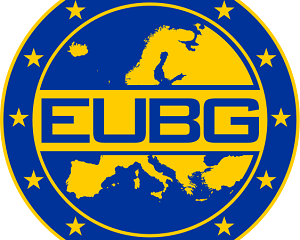The European Union Military Staff – Intelligence Directorate
Basic Facts
The work of the European Union Military Staff (EUMS) and the Intelligence Directorate has to be seen in the broader context of the European security framework. The development of the European Security Strategy (ESS) and the launch of European Security and Defence Policy (ESDP) missions in the early 2000s led to the development of EU planning and implementation capacities regarding military and civil operations. Since the Treaty of Lisbon in 2007, most of the EU member states cooperate in the framework of the Common Security and Defense Policy (CSDP). Current EU Operations like EUTM Mali (European Training Mission Mali) or the completed EUFOR (European Union Force) operation in the Democratic Republic of the Congo during the election process require amongst others intelligence support, in the planning of and during a mission as well as for the final assessment after its completion.
The European External Action Service (EEAS) is the responsible institution for the coordination of the EU external actions whereas the European Union Military Staff (EUMS) supports the work of the EEAS from the military point of view. Its head is Vice Admiral Hervé Bléjean, a Belgian Navy Officer. The EUMS itself is directly responsible to the High Representative/Vice President of the EU and works under the direction of the European Union Military Committee (EUMC) composed of the Chiefs of Defence of the member states.
Main Tasks and Goals
Within the EUMS, the Intelligence Directorate contributes to:
1. Early warning capabilities
2. EUMS planning
3. Crisis Response planning and assessment for operations and exercises
The EUMS INT is organised in three departments. Firstly, the Policy Branch develops inter alia the design of intelligence concepts and contributes to the planning of EU military operations. Secondly, the Requirements Branch facilitates the collection of information from the national military intelligence agencies. The reason is that the EUMS INT doesn’t collect its own intelligence information. It depends on the contribution of the member states regarding classified information. The Production Branch produces intelligence assessments on specific topics and also briefs on a regular basis.
Due to the risen importance of the EEAS, the need for intelligence support at EU level has also risen. The EUMS INT cooperates closely with the EU Intelligence Analysis Centre (INTCEN) to address the requirements of the EU institutions and policy makers. The INTCEN is a civilian intelligence institution in the framework of the EEAS under the authority of the HR/VP. The EUMS INT also works with the EU Satellite Centre (SATCEN), which produces Geospatial Intelligence (GEOINT) for EU institutions.
Current Role
The intelligence agencies of the member states share their information voluntarily and expect a responsible use of the data under their national conditions. Therefore, the EUMS INT is an information manager on the terms of the national agencies. It draws together intelligence information of the member states and of the SATCEN to support the decision-making regarding external affairs at EU level. Although the EUMS INT relies on national agencies, it strengthens the independence of the EEAS and the HR/VP to develop a foreign policy of the EU as whole.
Vision
Foreign policy and state security are key features of national interest. A breach of national independence in this field might be very delicate. On the one hand, it could be favorable to develop a foreign policy on a European scale. As long as a strong division of competences exists between the EU and the member states in the intelligence sector, there don’t seem to be many opportunities to expand the competences of the EUMS INT or the INTCEN. What could be improved is the share of information between national and EU intelligence institutions, which again raises issues on the handling of the information.
Conclusion
The EUMS Intelligence Directorate makes a significant contribution to the capacities of the EEAS and the HR/VP. Last but not least, it serves, like the EUMS as a whole, as an interface, where military officers from the EU member states work together and experience the advantages and difficulties of the work at a European level. These experiences can have a positive influence on their work back in the national Armed Forces and the development of European cooperation in the defence sector.

0 Comments